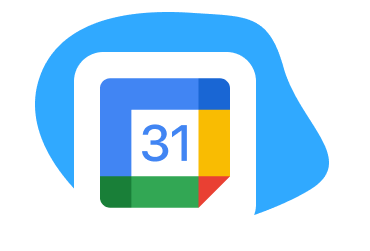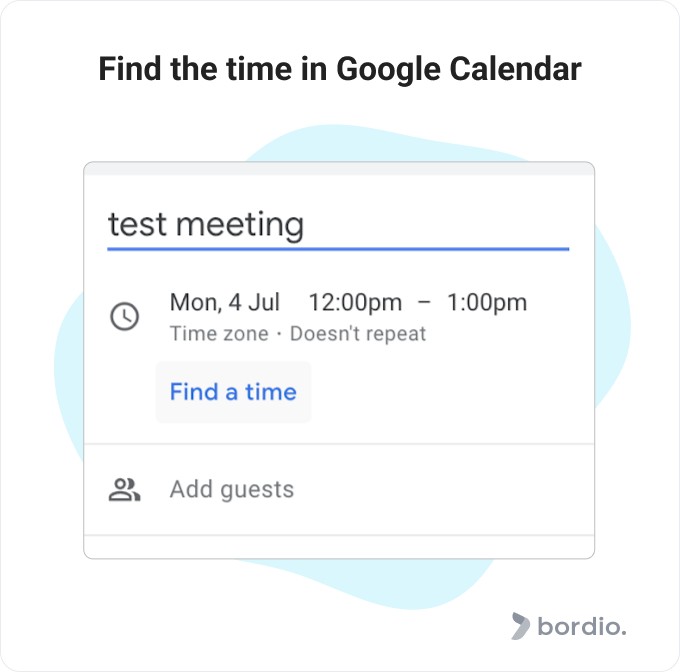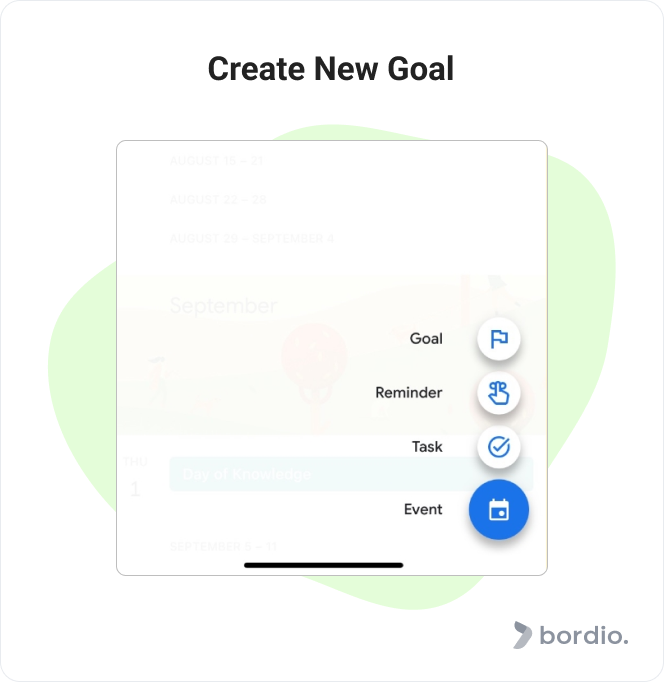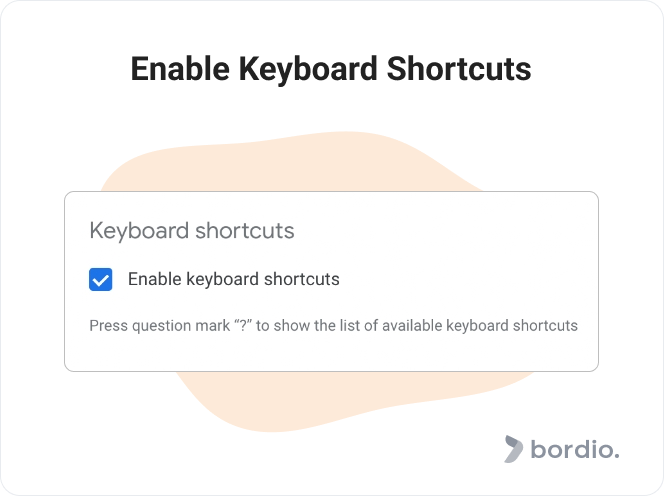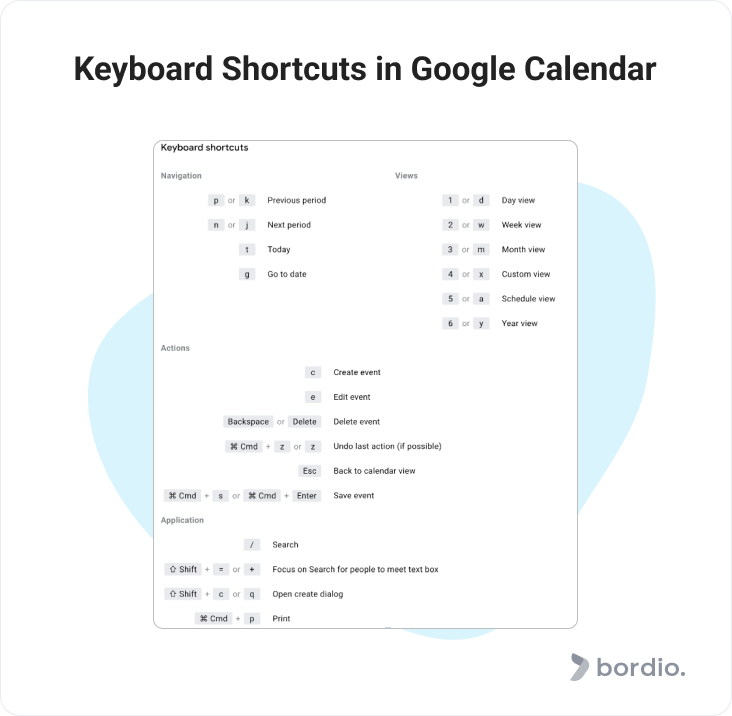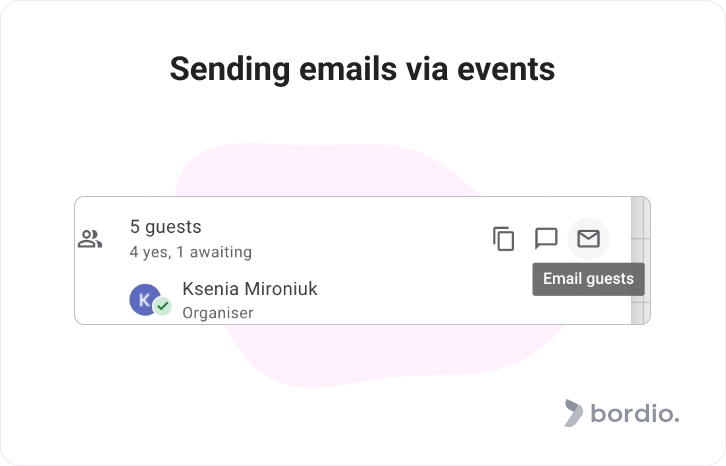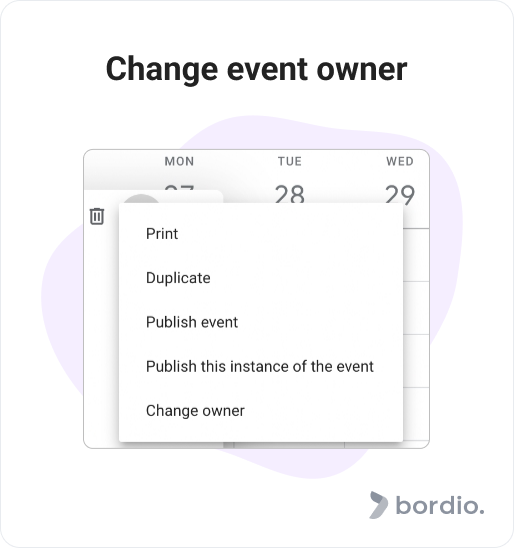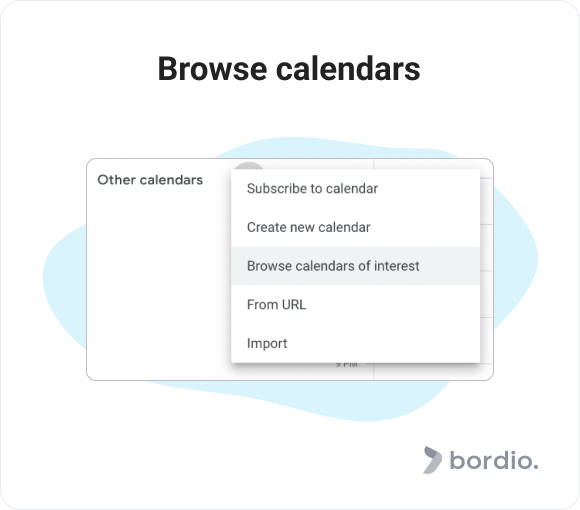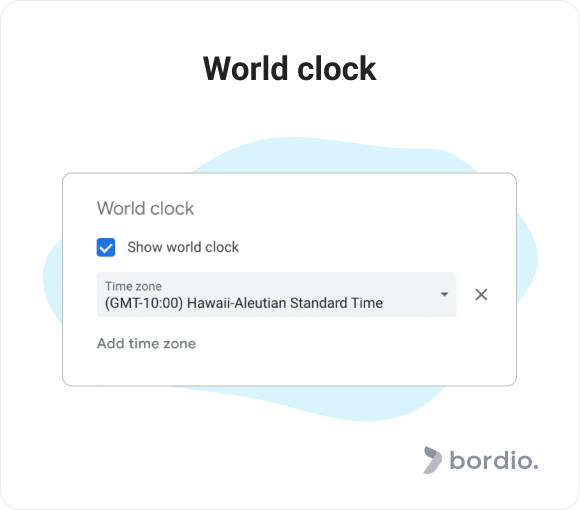It’s hard to find a person who’s not used a Google calendar before and will not use it in the future. Anyone who has a Gmail account automatically gets a Google Calendar account too, so if you’ve never used the calendar but use Gmail – you might be missing out! Schedule building in a Google Calendar is classic!
Whether it’s your company’s policy or your personal preference, it’s important that you understand and utilize the Google Calendar’s full potential.
Just like any app out there, Google Calendar has many hidden gems that make a huge difference to your work life and productivity once you start using them. Some of them are only available through a desktop or the app version though, so make sure you keep it in mind when working on the calendar via your smartphone and laptop.
If you are interested in finding out about those tricks and tools that Google Calendar has to offer, then keep on reading!
Ps – if you are using Google’s email service, then our Gmail organization guide will help you make the most of it. Make sure to check it out too.
“Find a time” for new events in Google Calendar
This first tip is targeting an infamous issue of struggling to schedule a meeting with multiple people.
How is it possible that someone is always unavailable in the time slot when others can make it?
The “find the time” option allows you to forget about this nightmare forever, given that all participants are also using Google Calendar. Once you click on this option, you’ll see the schedules of all participants for a certain day, helping you navigate the scheduling process better and not having to check in with everyone in group chats.
Did you know? With Bordio’s online calendar planner, scheduling team meetings is even easier than with Google Calendar? Everyone on the team has access to their teammates’ calendars, meaning that they can instantly see everyones’ availability and spot the best time for a meeting. It means that the meeting organizer can schedule meetings quickly and stress-free. Use Bordio’s best online planners!
Custom notifications
Notifications are designed to help us stay on top of everything stress-free. However, the default event notifications 10-minute before the upcoming meetings in Google Calendar are not exactly helping us achieve that.
To make the most of notifications and to make them actually useful, go to Google Calendar settings and specify how many notifications you want per event and where they need to show up (you can have notifications appear in your inbox or as a pop-up on the screen).
Tip: If you are using Bordio’s free weekly planner for managing your teams and projects, you can set up custom notifications right from the app. Bordio’s best weekly schedule maker supports notifications for both tasks and events, so you can always be reminded about upcoming commitments whenever is most convenient for you.
Goals
If you want to work on your New Year resolutions, goals, and hobbies, Google Calendar can support you and help stay on track.
Important: goals are not available via a web application, so make sure you use the Google Calendar app to create them.
To set a new goal, open Google Calendar, click on Create, and choose Goal event.
You can set the frequency for the recurring Google Calendar events that will be generated by the calendar to support your goals. So, next time you decide you’ll learn French, go straight to Google Calendar and set yourself up for success.
Tasks
Yes, Google Calendar allows creating tasks, and not only events.
Use this feature to categorize and differentiate items on your Google Calendar, and stay on top of everything all the time. You can add time and description for your tasks and create multiple task lists. Once finished with something, check the box next to the task and it will show as completed.
Tip: All Bordio users can view their tasks and events in a single calendar board in their task organizer app. Streamlining the work process is one of the key priorities of the Bordio team, so the free online to-do list application is made as simple yet efficient as possible.
Tags add-on
If you use one calendar for many things, or if your job responsibilities fall into several categories, you can use Google Calendar tags add-on to structure your to-dos.
The Google Calendar tags add-on allows you to create custom categories, so you won’t have to fit your life into the default tags that don’t really match your needs. Once organized, tags will make your calendar view much more put together and easy to work with.
Multiple calendars
When you open the Google Calendar for the first time, you see the default calendar that was automatically created for you.
That’s okay for some people, but if you are managing multiple projects, have many drastically different goals, or just like to keep things separate, you can create multiple calendars to accommodate your various needs.
It is helpful for task prioritization because once you create multiple calendars, you can review them one by one, and they will be less cluttered with events and tasks. It means that you will be far less likely to miss an important task because it’s buried under repetitive, low-priority things.
Keyboard shortcuts
Google Calendar has its own set of keyboard shortcuts available once you enable them in settings. To activate, go to Settings – General – Keyboard shortcuts.
You can then see the detailing to check what kind of shortcuts are available to you.
Some of the most common Google Calendar keyboard shortcuts are:
- Search = shift + /
- Create event = c
- See full event details = e
- Move to the current day = t
- Scroll to previous date range = k or p
- Scroll to next date range = j or n
- Delete event = Backspace or Delete
Sending emails via events
If you’ve been tasked with sending a follow-up email with event details to all meeting participants, your first thought would be to manually copy and paste everyone to the email. Obviously, that is not the most optimized way of doing it, and Google Calendar has come up with a better solution.
Instead of going through the tedious manual adding of email addresses, start typing the email straight in the event.
And just like that, you’re saving yourself time and energy.
Change event’s owner in Google Calendar
If you’ve created an event that you no longer need (or want) to be in charge of, it’s actually pretty easy to assign someone else as the owner.
Just open the event, click on the Options button in the upper right corner and choose Change owner.
And voilà! You’re no longer asked to do the changes and updates for the event you’re not attending or monitoring.
Get your daily agenda emailed to you
If you are the type who needs an extra notification or reminder about upcoming commitments, then this tip is for you!
To do that, go to Calendar Settings – Other notifications. There you’ll see the Daily agenda and be able to change None to Email.
And there you go! No need to manually check your calendar every day or hire an assistant to prepare your agenda for you.
Event duration
If you are working on your time management, you are probably familiar with many productivity tips, such as scheduling your meetings for 45 minutes instead of one hour.
Google Calendar lets you change each event’s duration when you’re creating it but the system’s default setting is 60 minutes. You can actually set the default duration to be anything you like. Please note though, that the minimum is 15 minutes.
So from now on, instead of manually changing the duration each time, you’ll be able to skip that part and keep your meetings nice and short.
Recurring events in Google Calendar
Utilize recurring Google Calendar events for both personal and professional lives.
A calendar event does not need to be solely for your professional goals. Create a recurring event for each of your friends’ and relatives’ birthdays. That way you’ll build stronger relationships and will have more time to prepare a thoughtful gift (just make sure you activate notification in event settings).
Create calendar events for regular get-togethers with friends, so that no one can skip those events last minute saying they’ve completely forgotten about them.
But also please use this Google Calendar feature for your work too. You probably already have the main stuff synchronized with your Google Calendar, such as weekly 1-on-1 with your manager.
Additionally, you can schedule regular educational sessions to support your professional goals. For example, you can create a new event for one hour that will run every Friday from 9 to 9 am. During that hour, you can learn more about topics that matter to you.
If you’re not sure what to do during this study hour, pick one of the books that we recommend in productivity books or project management books guides.
Calendars of interest
For companies working with clients all over the world, or saas marketing agencies that need to create relevant content, Google Calendar has an option to add calendars of interest that include religious and regional holidays.
That way, you’ll not forget to congratulate your partners on an important holiday and will not try to schedule a business call with them on that day.
Task tracker calendars of interest are a good alternative to having to create events manually in your Google Calendar. However, they include all holidays and not just the main ones. So, as you are adding interesting calendars, make sure your task planning calendar view doesn’t get too overcrowded.
Private meetings
Some of the meetings you schedule are better kept private, whether due to a sensitive topic or if you share your calendar with people from outside of your company.
In meeting settings, you can easily change the calendar event to private. Then, instead of viewing full event details, attachments, and meeting agenda, others will simply see that you’re busy at that time.
Working hours
Now more than ever, people work on different schedules, so it’s not uncommon to get an invite for a meeting that’s outside of your working schedule.
If that happens to you, you know how awkward it can be to notify the host that you’re actually unavailable during that time. And, sadly, in some companies, you’ll be deemed unprofessional if you skip a meeting that’s outside of your shift.
The best solution to combat this issue would be to enable working hours in your Google Calendar, so colleagues will be getting a warning if they try to schedule a meeting when you’re off.
The beauty of this feature is that you can customize the working hours for each day. So, if you have to pick up your kids from nursery early on Tuesdays, you can mark yourself unavailable on that day after 1 pm, and rest assured that nobody will try and squeeze in a quick call with you after that time.
Appointment slots in Google Calendar
In addition to limiting your accessibility for meetings to working hours only, you can also create appointment slots in your Google Calendar that you’ll share with others to schedule meetings with you. That way, you will only be getting meeting invites for the slot that you’ve identified.
It’s an invaluable tool for freelancers, consultants, and project managers that have multiple clients, roles, and responsibilities to attend to.
Meetings and calls are powerful working tools, but they can be distracting, especially when you have focused work to do. With appointment slots, users can stay in control of their daily planners and productivity, and benefit from task batching by having all meetings within a specific timeframe.
Please note that appointment slots are only available with school or work Google Calendar accounts.
World Clock
If you travel a lot or work with partners overseas or cross-country, you might want to use the world clock option in Google Calendar. With it, you’ll be able to schedule meetings and events across time zones and view everyone’s domestic time zones.
You can add multiple time zones or just one extra. To do that, go to Settings – World clock – Show world clock.
Then you can select any time zone to be shown in your calendar view.
By the way, you can always change your primary time zone in Google Calendar if you work with a team in a different state or country.
Mobile app
Google Calendar has an app that is a must for all calendar users.
Google Calendar app allows you to stay on top of all events, goals, and tasks. You can see and change them on the go, without having to carry a laptop anywhere you go.
Some of the functionality is only available in the desktop version of Google Calendar, but users can perform all main actions across key functionality in the app.
In general, it is worth downloading all Google apps for the products that you are using regularly, just like you do for Google maps.
Integration with Bordio
Integrate your Google Calendar with our productivity and project management solution.
The integration allows you to see all your activities from your Google Calendar right in Bordio, helping streamline the work process and be more efficient. Then just use tools for projects or anythibg else in Bordio.
Mini-tips to make use of Google Calendar even better
Here is a selection of short yet powerful tips that can further improve your experience with Google Calendar:
- Customize your calendar view. Change it from the default week view to whatever you feel works best for you. For example, you can have a work week view, excluding the weekends.
- To add the new calendar event quickly, click on the empty space in the calendar and the window will appear to set the event up.
- If you are using many calendars at a time, hide the low-priority ones that are not used a lot and avoid digital clutter.
- When scheduling remote group meetings, add Google Meet links instantly while editing the event by clicking Add conferencing. All meeting attendees will then be able to follow the link when the time comes. For remote work it’s also good to use remote collaboration tools for business.
- Use event attachments to add any documents, presentations, and other materials that will be used during the meeting, instead of sending them separately via your corporate messenger.
- You can also change the past events’ brightness, so when you view your week, you can instantly see how many more meetings you need to attend.
Final thoughts on Google Calendar tips
Google Calendar is made super easy to use without training or guidance, but don’t let that deceive you into thinking that it’s very basic. There are many hidden depths that you can find if you take the time to look.
If you think of a feature that would be nice to have, use the Google Calendar search bar – maybe this functionality is already there! Google actually has a pretty advanced calendar search, so don’t disregard it before you try it.
Technology can make our lives much easier, and there is no need to ignore the perks that save your time and make you more organized and put together.
